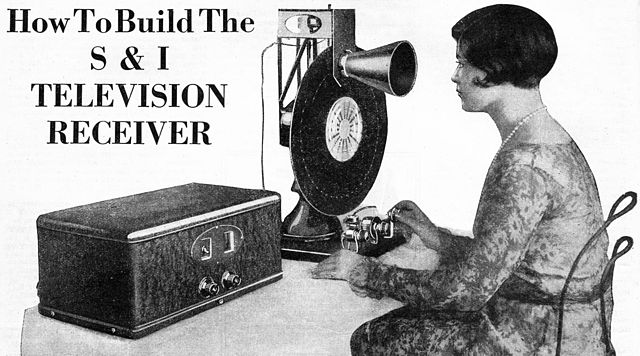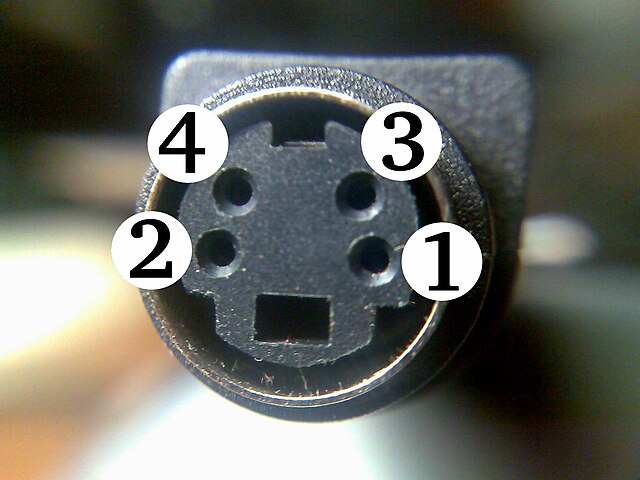Mechanical television or mechanical scan television is an obsolete television system that relies on a mechanical scanning device, such as a rotating disk with holes in it or a rotating mirror drum, to scan the scene and generate the video signal, and a similar mechanical device at the receiver to display the picture. This contrasts with vacuum tube electronic television technology, using electron beam scanning methods, for example in cathode-ray tube (CRT) televisions. Subsequently, modern solid-state liquid-crystal displays (LCD) and LED displays are now used to create and display television pictures.

Watching a homemade mechanical-scan television receiver in 1928. The "televisor" (right) which produces the picture uses a spinning metal disk with a series of holes in it, called a Nipkow disk, in front of a neon lamp. Each hole in the disk passing in front of the lamp produces a scan line which makes up the image. The video signal from the television receiver unit (left) is applied to the neon lamp, causing its brightness to vary with the brightness of the image at each point. This system produced a dim orange image 1.5 inches (3.8 cm) square, with 48 scan lines, at a frame rate of 7.5 frames per second.
Ernst Ruhmer demonstrating his experimental television system, which was capable of transmitting 5×5 pixel images of simple shapes over telephone lines, using a 25-element selenium cell receiver (1909)
Baird and his television receiver
Jenkins Television Co. rotating disk television camera, 1931
Video is an electronic medium for the recording, copying, playback, broadcasting, and display of moving visual media. Video was first developed for mechanical television systems, which were quickly replaced by cathode-ray tube (CRT) systems, which, in turn, were replaced by flat-panel displays of several types.
Composite video (single channel RCA)
S-Video (2-channel YC)
Component video (3-channel YPbPr)
SCART








